The cactus- or prickly pear is an interesting kind of vegetation. It is a cactus that is both a vegetable and a fruit because the fleshy pads are considered a vegetable and the parts that develop the seeds are the fruits. On top of that, the plant is increasing in popularity due to its multiple uses and low input costs.
Opuntia ficus-indica is the most common variety that grows in Southern Africa. Originally it was imported from Mexico during the 1700s to create living fences for farms in the Western Cape. A farmer from Graaff-Reinet brought two pads to Cape Town and cultivated cactus pears on his farm. In the 1850s, Sekwati, the Pedi ruler, started using it as livestock fences as well.
However, due to how easily the plant grows, it quickly became a pest and infested many areas. It is estimated that by the 1930’s, over a million hectares of natural veld in the Karoo and Eastern Cape were taken over by this cactus.
Luckily, today, innovative growers have found many uses for prickly pears. We eat the fruits when they are in season, but also harvest the oil which has many health benefits. The pads are also used as livestock feed as well as for human consumption. This usually only extends to the young leaf pads (cladodes) that are picked before they reach 15 cm in length.
The plant has bright flowers ranging from yellow to red. The pears have a thick green skin, which changes colour as the fruit ripens. Depending on the variety you grow, this colour can be orange, red, or purple. When the fruits are peeled, the inner flesh also differs in colour from green to purple. It tastes sweet and has hard seeds in the middle. The fruits are used in jam, jelly, soup, juice, or eaten as is.
The plant reaches up to 5 m in height when it is fully grown, and features a thick, woody trunk. What looks like huge leaves are actually stems. Stems are covered in a thin layer of wax and often found with spines. Varieties that are spineless have been selected to grow commercially as they are easier to harvest and handle.
More than a hundred varieties are available, depending on which you are able to obtain in your area.
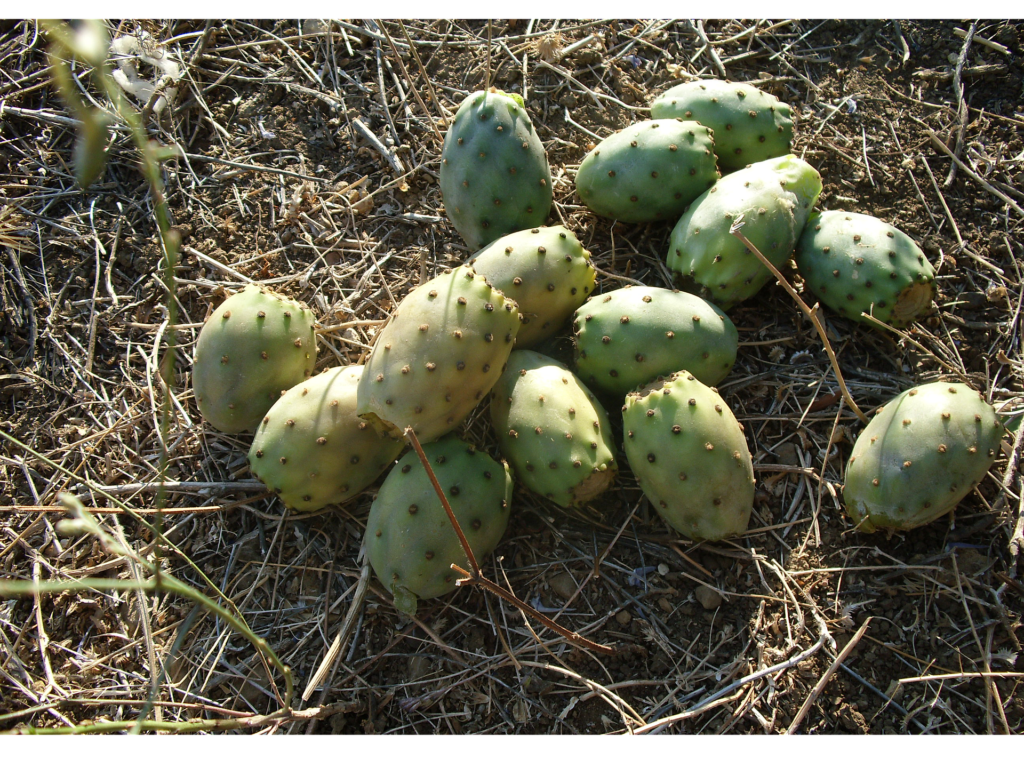
Harvested prickly pears are ready to be packed or processed. (Source: Vecteezy)
Soil and climatic requirements
One of the reasons why prickly pears have become a popular crop is the fact that they fare so well in dry climates. They require well drained soil and can survive on rainwater alone once their roots have been established. As with most drought-tolerant plants, prickly pears’ roots suffer when they are waterlogged. Soil ph should be neutral, ranging from 6,0 to 7,5.
It is important that these plants receive full sun. Warm temperatures are ideal for these cacti, but the good news is that they adapt well to extreme temperatures.
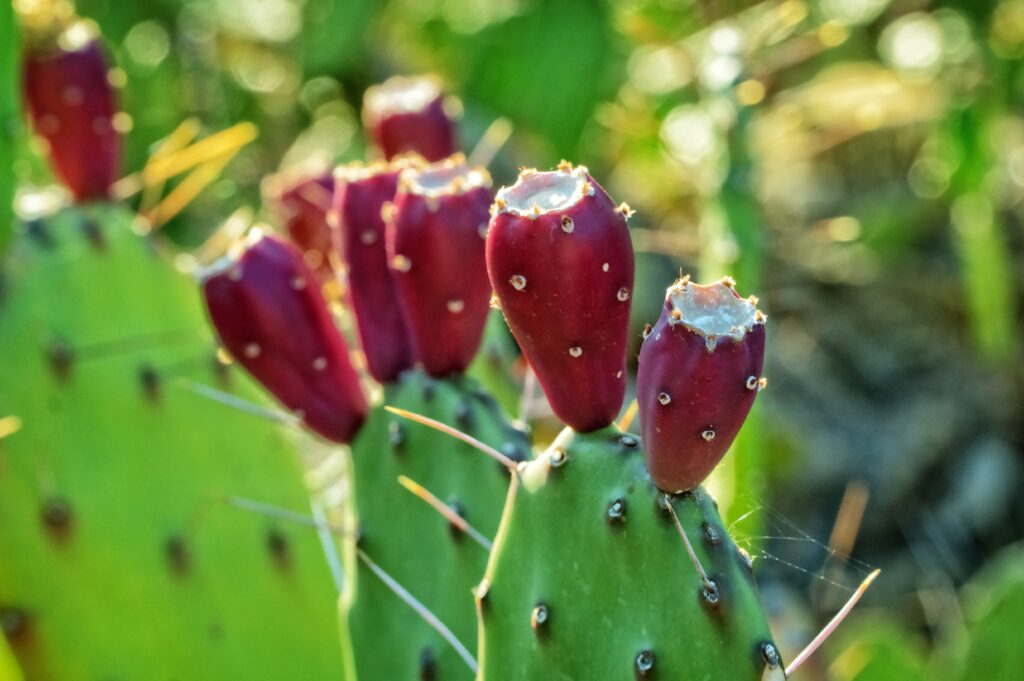
The colour of ripened prickly pears varies depending on the variant planted. (Source: Mali Maeder on Pexels)
Planting
When propagating the prickly pear, you can use seeds, but using pads (cladodes) works best.
Prepare the soil bed by ripping the field. You can lay out rows 5 m apart, and plants can be positioned between 5 to 2 m apart, depending on the density you are looking for. If you are not planning on using tractors or machinery between the rows, you can make the rows narrower.
Plant the specimens during spring and early summer. This ensures that they are well established before winter. Place the pads upright in the soil. Take care if your cultivar has spines, as these can stick into your skin. Use tongs instead of your hands. Make sure to find out if you are legally allowed to propagate the plant in your area. In South Africa, for instance, it is illegal to propagate the prickly pear with spines, but spineless varieties are allowed.
Your plants will start to bear fruit after 18 months. After four years you can expect a full harvest. Harvesting is labour-intensive. In the southern parts of Africa, harvesting season ranges from early December to late April.
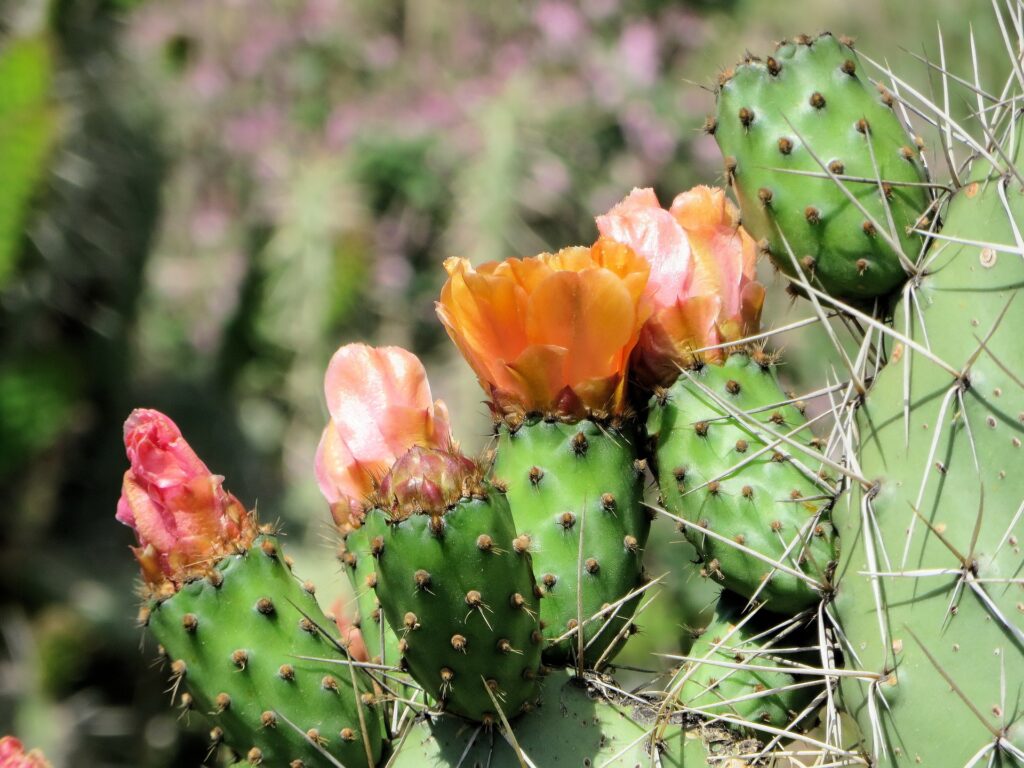
Blooms can differ in colour depending on the variety you are cultivating. (Source: Vecteezy)
Irrigation
Once they have been planted, they need to be watered every two or three weeks until their roots have established properly. You do not need to invest in a permanent irrigation system. After a year, the cacti have reached maturity. This means that they can now store water well and thus have an increased frost tolerance.
Fertilisation
Cactus pears do not need to be fertilised in the first two years of their life. You can add a bit of manure at the base of every plant. Thereafter, a thorough soil analysis will indicate what fertiliser you need, but it has been noted that prickly pears respond well to nitrogen-rich fertilisers.
Weed control
In prickly pear orchards, farmers only have weed problems where perennial grasses grow between the cacti. Too much grass makes it difficult to access the plants and long grass can block out sunlight to smaller plants.
Herbicides can assist with controlling the grass, or you can use a hoe. Take care not to damage the shallow roots of the cactus when hoeing.
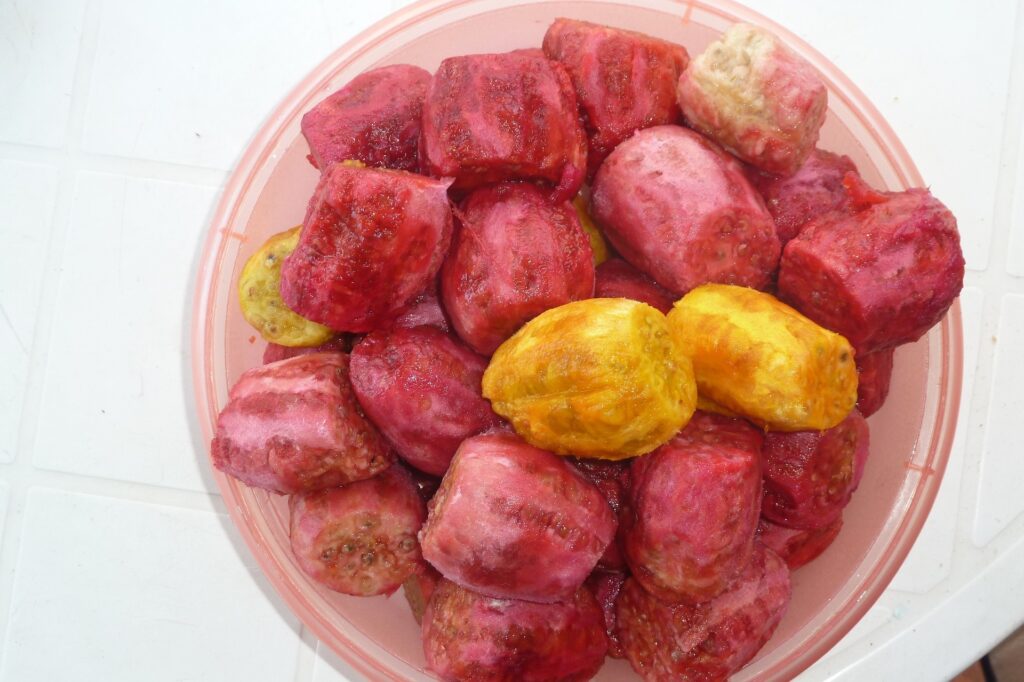
Depending on the variety you grow, prickly pears or cactus pears can have different colours. The sweet fruit has many seeds embedded into its flesh. (Source: Vecteezy)
Pest control
There are two insects that are harmful to the prickly pear. Because the plants originated from Mexico, the South African government imported cochineal (Dactylopius coccus), a beetle, in 1913 and cactoblastis (Cactoblastis cactorum), a moth, in 1924 for biological control. This backfired because the insects also attacked cultivated crops.
The cochineal beetle is soft and red, covered by a white wax coating. The cactus moth lays its eggs on the pads. When the eggs hatch, the larvae bore into the cladodes, feeding off them until the plant eventually dies.
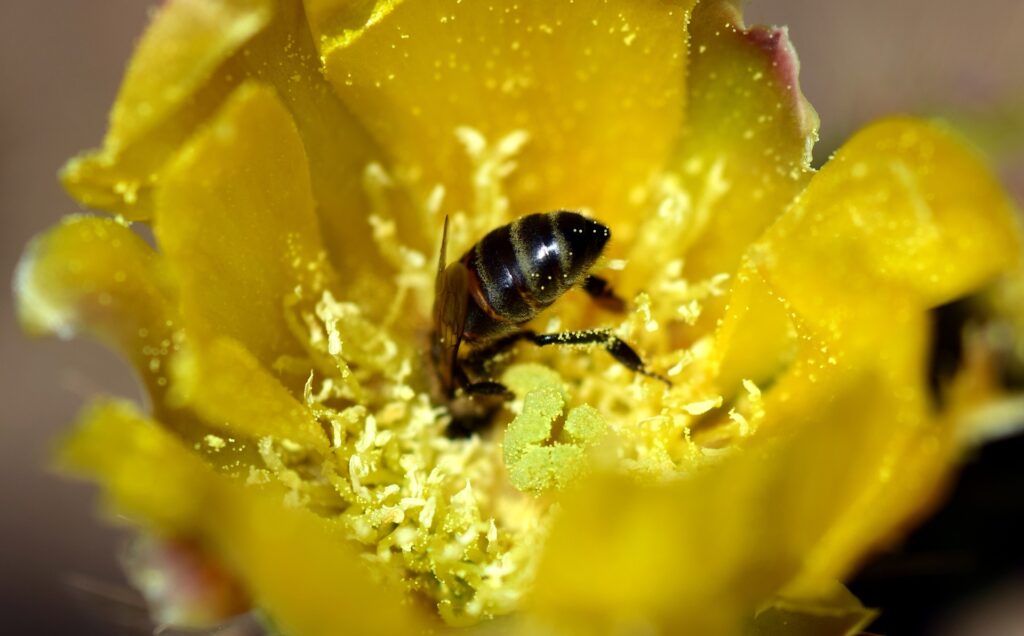
This hardworking bee is pollinating a yellow prickly pear flower. (Source: Vecteezy)
To control these infestations, you will need to take a combined approach by removing some of the bugs by hand if it is a small infestation, or using chemicals. Electric insect traps can be used to attract moths. If you do not have access to pesticides, the beetle can be controlled by using a mixture of dish soap and water sprayed onto the cactus.
Cladodes that have been damaged should be cut off. Either destroy them, or feed them to livestock.
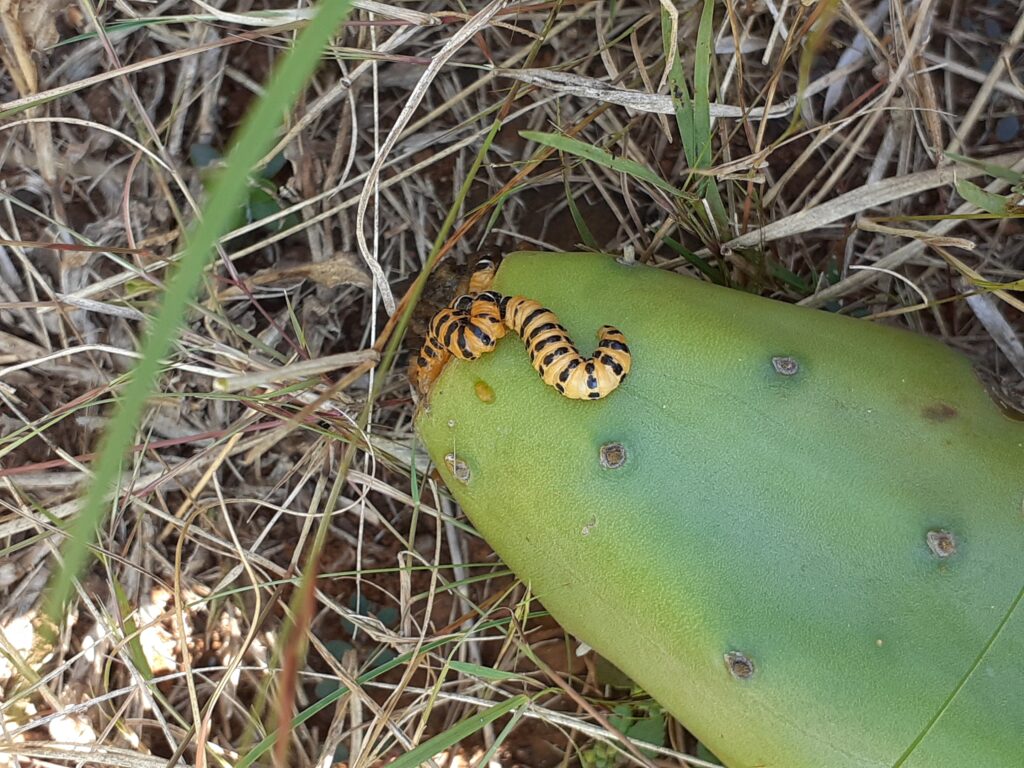
The larvae of the cactus moth feeds on the cladodes. A few can completely destroy your cactus if you are not aware of an infestation. (Source: Maryna Steyn)
Sources
9 amazing prickly pear cactus facts! (2019) Balcony Garden Web. Available at https://balconygardenweb.com/prickly-pear-cactus-facts/
Brown, J. (202AD) Why prickly pears are suddenly a hot crop in SA, News24. Available at https://www.news24.com/news24/bi-archive/cactus-pear-farming-in-south-africa-2020-3
Coleman, A. (2023) Cactus pear: One crop, three profitable markets, Farmer’s Weekly. Available at https://www.farmersweekly.co.za/crops/field-crops/cactus-pear-one-crop-three-profitable-markets/
Gordon, A. (2022) 13 edible prickly pear varieties and taste profile, luv2garden.com. Available at https://luv2garden.com/pricky-pear-cactus-varieties/
Grant, B.L. (2021) Growing prickly pear – plants in the home garden, Gardening Know How. Available at https://www.gardeningknowhow.com/ornamental/cacti-succulents/prickly-pear/growing-prickly-pear.htm
Klein, H. (2014) Prickly pear (Opuntia ficus-indica) (Cactaceae), Agricultural Research Council. Available at https://www.arc.agric.za/arc-ppri/Pages/Prickly-pear.aspx
Kriel, G. (2023) Cactus Pear Production in South Africa, South Africa Online. Available at https://southafrica.co.za/cactus-pear-production-in-south-africa.html

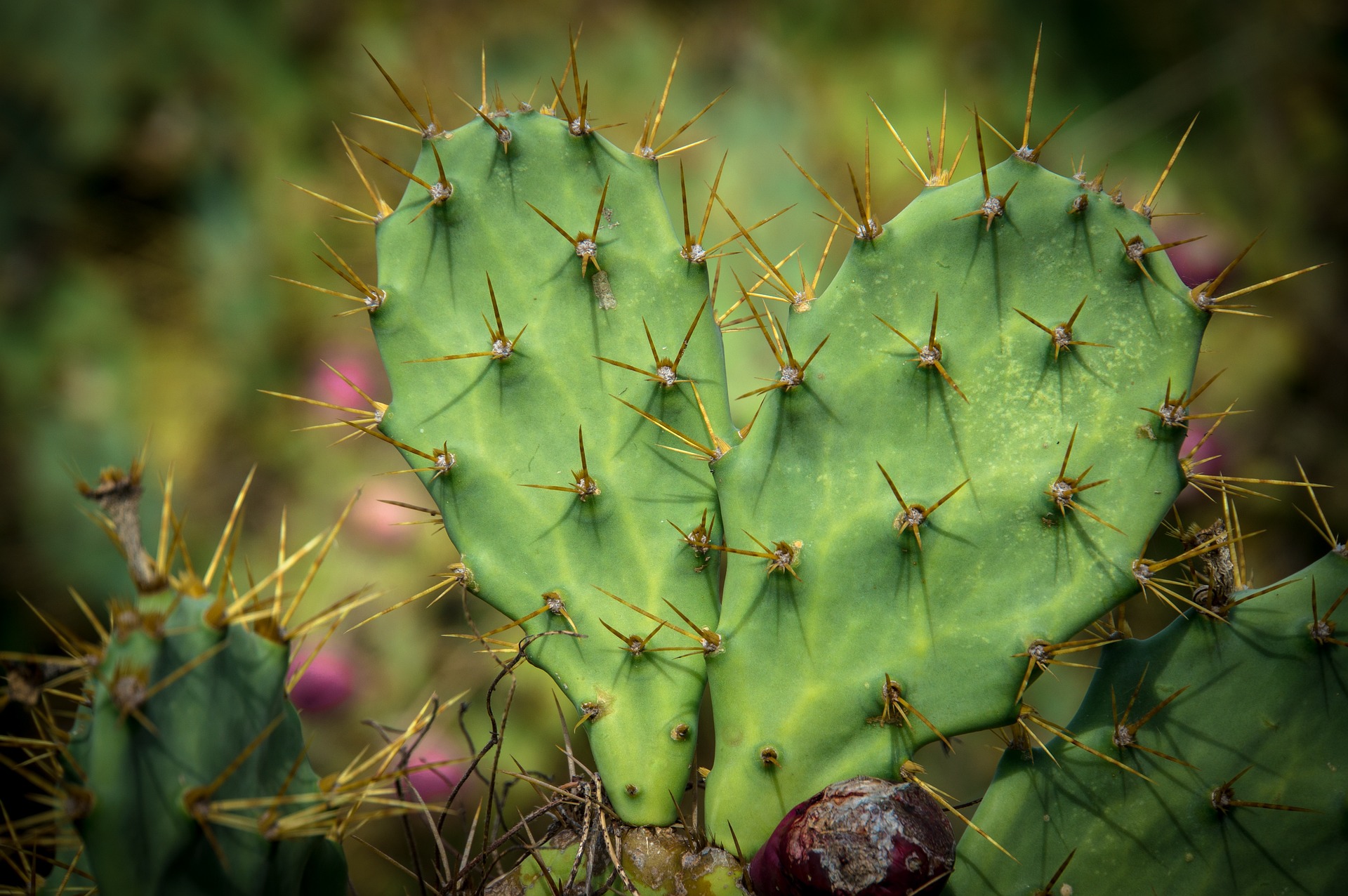








Great article. I plan to grow this commercially.